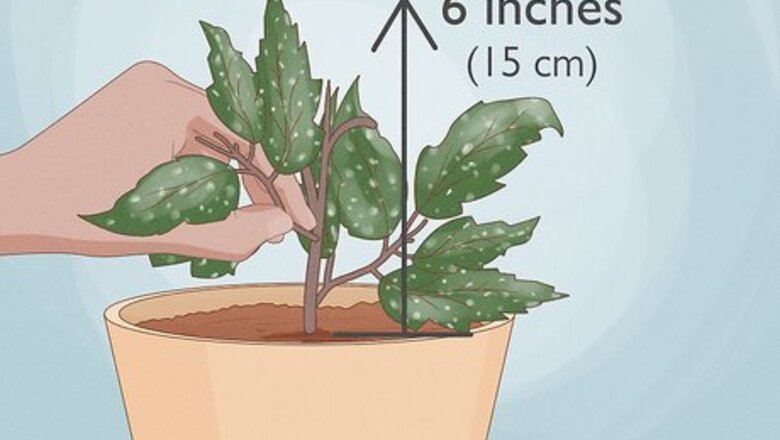
views
Timing Your Pruning
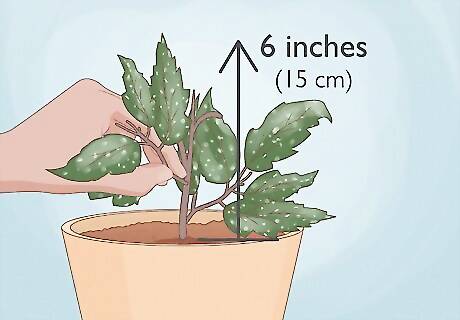
Pinch off new growth a few weeks after planting. Use your finger and thumb to remove the ends of small stems that branch off the main stems. This will encourage several new stems to sprout in place of each stem you pinch. This step is particularly important if you have cane begonias, such as Angel Wings. Pinch off new stems when the newly-planted cane begonia is about 6 inches (15 cm) tall. This will make the plant produce two branching stems, rather than a single stem growing straight up. You can also pinch off the young flower buds of tuberous begonias. This will make the plant produce additional blooms.
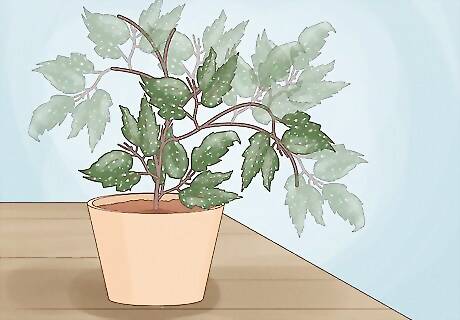
Thin out thick foliage when the begonia is fully grown. If your begonia gets bushy and overgrown, you can cut off up to a third of its stems. This will make the plant look less rambling and more aesthetically pleasing.

Deadhead the begonias at the end of the blooming season. When the flowers and buds of a begonia go brown and die, you should remove them. You can use your fingers, pruning shears or scissors. This process will help the plant conserve its energy and produce new flowers and new growth rather than seeds. For most begonias, the blooming season is in the spring and summer. Winter-flowering begonias bloom from late autumn to mid-spring.

Cut back begonias in autumn. Once the begonias have finished flowering for the year, you can use pruning shears or sharp scissors to cut the main stem of the begonia back to a length of 4 inches (10 cm). This will help conserve the plant’s energy over the winter so that it grows back the next year. If you're growing your begonias as a perennial, they need more pruning. You should cut them back up to 1/3 of the plant after flowering. Throughout the year, prune your begonias to shape their growth. If you have winter-flowering begonias, cut them back in the spring after they have finished flowering.
Keeping Your Begonias in Shape
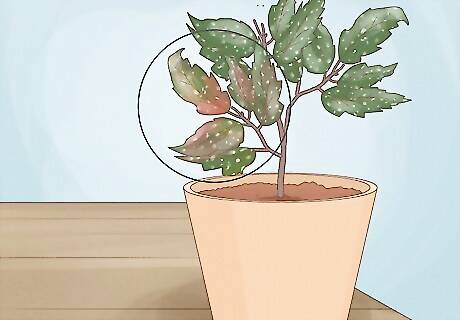
Inspect your plants for damaged or diseased areas. You should regularly check your begonia for leaves and stems which are discoloured.
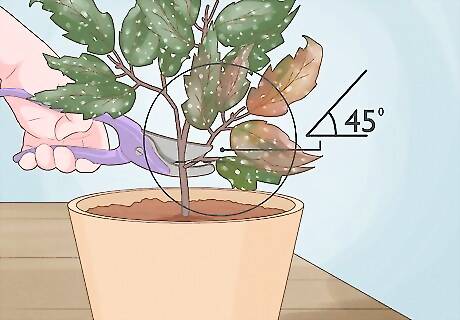
Remove dead or diseased parts with shears or scissors. Cut off the discoloured stem or leaf just below the start of the brown area, but try to leave as much of the healthy (green) area of the plant intact as possible. You should cut the stem off at about a 45-degree angle. If there is a large brown area, you can cut off the entire stem. If you do so, be careful not to damage the main stem. Make sure to remove the dead leaves and stems from the floor immediately as they may spread disease into the healthy plant.
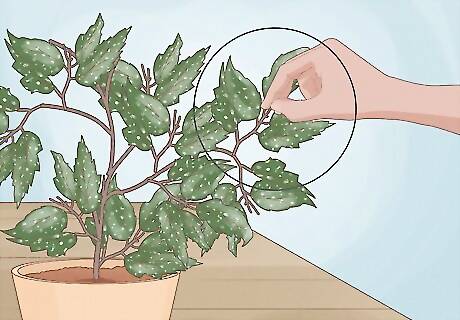
Pinch off the tips of the largest stems. In the growing season, use your finger and thumb to pick off the tips of the largest stems. This will help the plant’s appearance and other stems to grow more uniformly. Don’t cut the tips off all of the stems as this may damage the plant. Only cut off the tops of the few tallest stems.
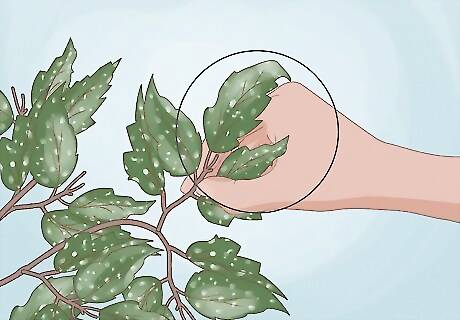
Pinch off the last two sets of leaves on a tall branch. This will encourage a growth spurt from this particular stem.
Pruning Intensively
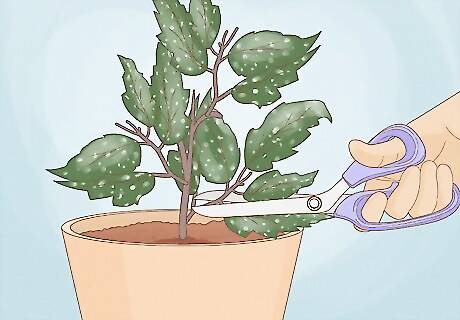
Trim off leggy stems with shears or scissors. Leggy stems are parts of the plant which grow outwards above your desired shape. They can detract from your plant's aesthetic appeal and drain energy from other parts of the plant. This step is particularly important if you have perennial begonias, which come back year after year.
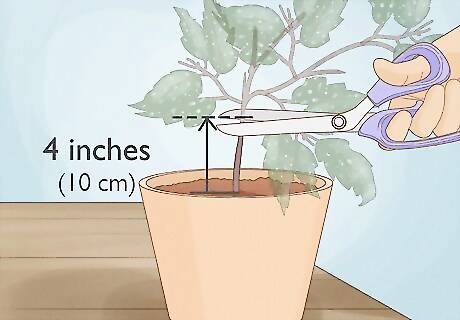
Cut back taller begonias. Types such as the cane begonia should be cut back at the end of the growing season (usually in autumn). Use pruning shears or sharp scissors to cut the main stem of the begonia back to a length of 4 inches (10 cm).

Store tuberous begonias over the winter. If you have tuberous begonias (such as the Go Go Yellow variety) and are growing them outside, dig up the bulbs after you have cut them back. You can then store the bulbs over the winter in a bag of peat moss, and replant them in the spring. If the tuberous begonia is growing in a pot, tip the pot over on its side and move it to a sheltered area. This will protect the begonia during the winter.
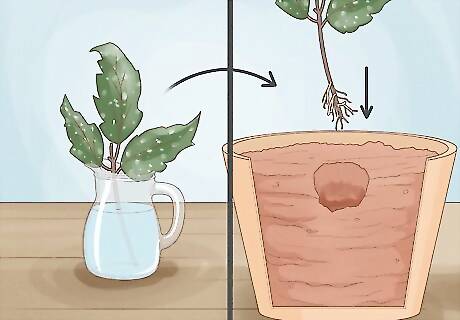
Re-root healthy cuttings. If you have stems of the begonia which are still green, you can keep them so that you can use them to grow other plants. Place the cutting in a glass or vase of room-temperature water. After about a week, roots will start to appear and the cutting will be ready to re-plant.




















Comments
0 comment